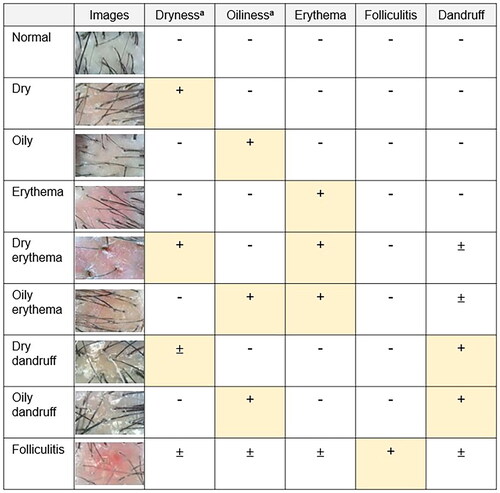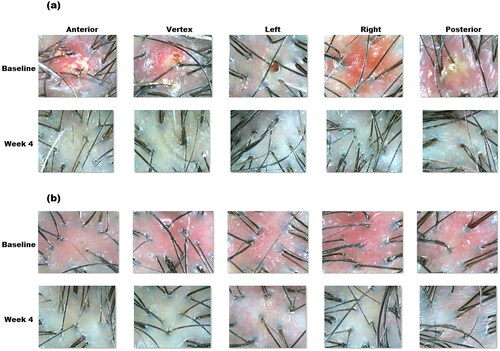Figures & data
Table 1. Demographics of the 32,774 Koreans whose scalp images were used to develop the SPI-AI.
Figure 1. Classification of scalp types. scalp photographic index-artificial intelligence (SPI-AI) diagnosed a feature of grade ≥2 as positive and classified the scalp type according to the positivity. aIf both dryness and oiliness were positive in one scalp area, only oiliness of grade 3 was considered positive. For example, a scalp with grade 2 or 3 dryness, grade 2 oiliness, grade 2 or 3 erythema could be defined as a dry erythema type.

Table 2. Classification of 101,027 scalp images labeled with the severity grade based on the SPI scoring system.
Table 3. Accuracy of the SPI-AI.
Figure 2. Sixty-fold magnified scalp photographs of two representative cases with significant improvement in the scalp photographic index (SPI) from before to after treatment. (a) S10 (29-year-old man, folliculitis type): the total SPI score decreased from 38 at the baseline to 14 at week 4. (b) S31 (26-year-old man, oily erythema type): the total SPI score decreased from 33 at the baseline to 16 at week 4.

Table 4. Primary outcomes after 4 weeks of treatment.
Table 5. Changes from the baseline in the total SPI score at weeks 4, 8, and 12 in patients who participated in the extension study.
Supplemental Material
Download Zip (701.7 KB)Data availability statement
For any purpose, with investigator support, anyone can request the data through email-id [email protected]
